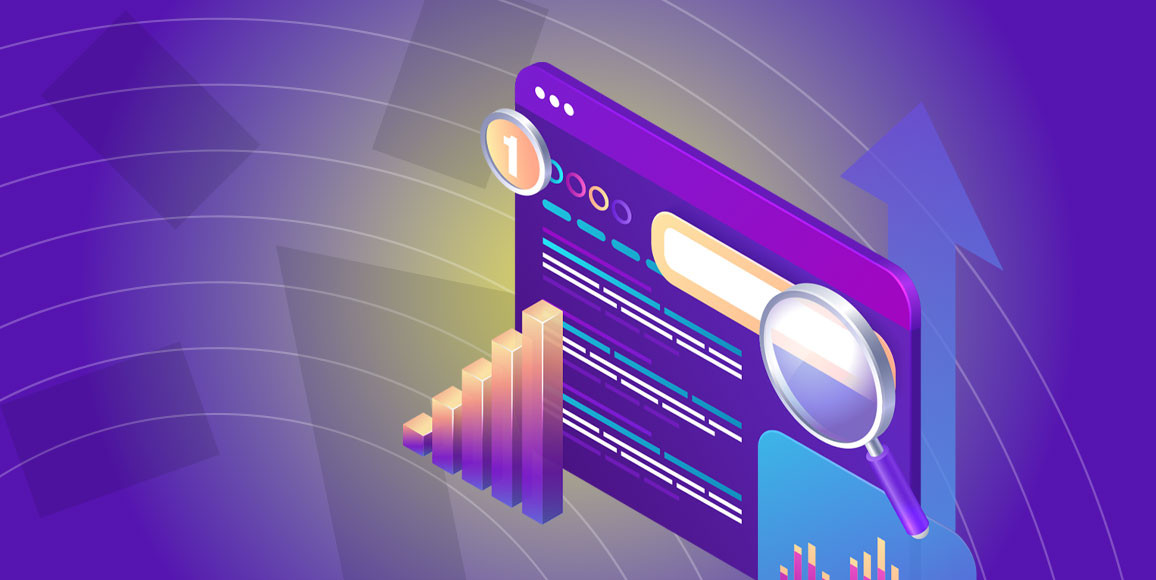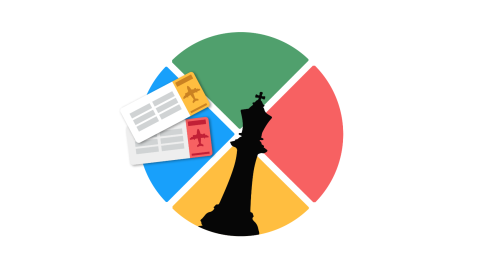SEO promotion in IT sector

In today's world, search engines are the primary tool for information retrieval, and their popularity continues to grow. For example, Google alone processes nearly 9 billion queries daily.
This cannot be ignored. If something has such a powerful impact on our lives, it is crucial to use it to your advantage. SEO (Search Engine Optimization) has become a key element of marketing as it serves several important functions:
- Attracts visitors to your website
- Increases brand loyalty
- Helps analyze audience behavior
- Improves user engagement
- Attracts new clients
Search engine results page (SERP) structure
Before diving into the specifics of SEO promotion, let’s break down the concept of "SERP" (Search Engine Results Page) — the web page generated by a search engine that displays the most relevant links.
Over the years, the structure of SERP has evolved significantly. Today, it includes:
Commercial results
These are paid search results marked as "ads." This category also includes banners and ad suggestions. The number of such ads depends on the competition of the query: the higher the competition, the more ads will appear.
Organic results
These are results generated by the search engine’s algorithms. The algorithms are designed to show the most relevant, up-to-date, and trustworthy information at the top of the results. The main format of organic results is snippets containing titles, text excerpts, and page URLs. About 65% of users prefer information from organic results.
"Rich Snippets"
These elements contain additional materials that complement search results: images, videos, maps, and documents. In Yandex and Google, they are displayed differently: Yandex shows maps first, while Google provides a short answer with a link to the source and images.
Shortcuts
These are concise, pre-generated answers that appear directly in the search results page. Shortcuts allow users to get the answer without clicking on links. They often include definitions, exchange rates, translations, and other compact information.
Related searches
This is a list of queries similar to the one you entered, slightly modified. The search engine automatically generates this list of variations and places it at the bottom of the page.
Control elements
These are interface elements for interacting with the search engine, including active buttons on the panel: links to sections, settings, and autocomplete in the search bar.
Understanding this structure is crucial as the methods to appear in organic and commercial results differ. To appear in organic results, you need to develop a comprehensive strategy with results appearing over time.
To be featured in commercial results, you can simply purchase ads, but the effect will be short-term. Appearing in shortcuts is even more complex, as the algorithms that generate these answers are not yet fully understood.
Features of IT product promotion
Comprehensive strategy
Promoting IT products requires a systematic approach. You need to define marketing goals, key promotion channels, and how they interact, as well as the primary audience segments in advance. With a well-developed strategy, you will have a clear action plan. Launching ads without a plan and expecting high results is not feasible.
Budget
It’s important to allocate sufficient funds for promoting IT products. In this sector, the cost per lead is high, so careful attention must be paid to budget formation, and be prepared to invest more in promotion.
Time
Be ready for results to take time. IT products have a long sales cycle, ranging from several months to a year. Patience and time are necessary to build a successful marketing campaign. Real sales may not occur for several months, and conclusions can be made based on an average timeline of 2.5 months.
Product presentation
The appearance and convenience of your website are as important for IT products as they are for other goods and services. Pay attention to the visual elements of your website. Aesthetics and functionality play a significant role in how users perceive your product.
Product clarity
Many users do not fully understand the potential of your product. It's important to explain the essence of your development in simple and clear terms. Explain what problems your product solves and how it can benefit the end-user.
Content marketing
Complex products require simple explanations, and this is where content marketing comes into play. Define which platforms you will use to publish materials, develop topics and categories that highlight your expertise and match the audience's needs. Regularly publish content and optimize the formats.
Measuring effectiveness
Track the effectiveness of advertising channels. Due to the long sales cycle, it is important to consider not just the last advertising channel that led to a conversion but also all the intermediate steps to fully assess the contribution of each channel.
Separate context and targeted advertising
Set your goals and key performance indicators (KPIs) before launching ads. There is no need to launch all types of ads at once. Define your priorities in advance and gradually move on to launching context and targeted ads.
SEO for IT
Defining goals
First, it is necessary to set specific goals, KPIs, and ways to achieve them. These goals can be diverse and include not only achieving the top position in SERP but also other important metrics such as:
- Increasing clicks and traffic to the site
- Boosting conversions into sales
- Expanding the company's online presence
- Lead generation
These goals will help focus your efforts on achieving specific results and measuring the success of the SEO campaign.
Collecting a semantic core
To reach your target audience, you must work closely with company representatives, conduct briefs, and engage in semantic research.
The semantic core is a set of key queries that describe your site and its content. These are the keywords and phrases users enter when searching for your products or services.
Use keyword analysis tools such as Google Keyword Planner, Ahrefs, SEMrush, and others to compile a list of relevant queries that best describe your product or service.
Content plan development
Based on the collected semantic data, create a content plan that includes texts in various formats: articles, service pages, and whitepapers. It’s important to understand what interests users and the intent behind their queries to provide a complete and quality response.
Content generation algorithm
Develop a clear workflow for creating content:
- Formulate the technical task (TT)
- Coordinate the TT with the team
- Write the text
- Edit and proofread for quality
Monitoring effectiveness
Continuously track the performance of your publications. If articles don’t yield the expected results, adjust the strategy:
- Increase or decrease the number of publications
- Reassess keywords
- Adjust the length of the articles
If the article doesn’t cover important questions for the audience, you need to update the material to fully address relevant topics.
Link building
Main goals
Link building is necessary to improve a website’s ranking in search engines. The “statistical weight” of a page is determined by the number and quality of links to it.
Types of links
There are various types of links: rented and permanent, anchored and unanchored, guest posts, links from directories and aggregators, partnerships, as well as links from forums, social networks, and link exchanges.
Professional approach
The link-building process is complex and requires a professional approach. An SEO specialist must analyze your site, competitors, and niche to develop an effective link strategy.
Technical site audit
Page load speed
Fast page loading is key to a site’s ranking on Google. It affects not only search rankings but also user satisfaction. Google Insight can help you evaluate your site’s load speed and see how search engines view it.
Microdata
Microdata helps structure data on your site, allowing it to appear in search results as rich snippets. This provides users with more detailed information about the content of the page, enhancing its appeal.
Page indexing
Indexing your pages in search engines is crucial for their display in results. To speed up this process, you need to set up a site map, ensure external links to the site, and properly organize internal linking.
Mobile optimization
The mobile version of your site should be as high-quality as the desktop version. Given Google’s Mobile-First filter, which prioritizes mobile sites, optimization becomes even more important for ranking at the top.
Final reminder
SEO is not a universal solution that can solve all problems and bring massive traffic. It is just one tool—albeit an important one—in the marketing arsenal. Approach search engine optimization comprehensively, considering other aspects of marketing as well.



